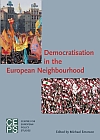The Orange Revolution: Explaining the Unexpected
The Orange Revolution: Explaining the Unexpected
Author(s): Hryhoriy Nemyria
Subject(s): Civil Society, Governance, Government/Political systems
Published by: CEPS Centre for European Policy Studies
Keywords: Orange Revolution; Ukrainian Democracy; Viktor Yanukovych;
Summary/Abstract: Very few experts predicted Ukraine’s Orange Revolution. Nonetheless the unexpected happened. Therefore the first question to ask is: What are the underlying sources and causes of Ukraine's breakthrough to democracy? The answer would bring us to a more vital question of how does one sustain healthy domestic political change. We then try to assess the potential of a wider impact of the Orange Revolution which has to do not just with Ukraine's immediate neighbours but also relates to the phenomena of overlapping integration spaces,1
including partnership and cooperation with the European Union, the Euro-Atlantic agenda and developments within the Commonwealth of Independent States (CIS).
It is clear that there was no single cause that triggered the Orange Revolution. It came as a result of interaction between various factors, the most important being the role of civil society, national identity, the nature of political institutions and modes of external pressures.
Needless to say, it would be misleading to concentrate only on the political process before and during the presidential elections in 2004. There are different ways to explain the revolution depending on how deep one wants to dig. I would suggest that there were three distinctive periods in the genesis of the Orange Revolution: i) 1991-2001: maturation, ii) 2002-03: incubation, and iii) 2004: breakthrough. Basically these 14 years since the break-up of the Soviet Union and Ukraine's newly obtained independence [from above] witnessed a very gradual and uneven process of growing differentiation in the initially rather homogeneous post-Soviet space which was best [described at the beginning as a ‘legacy paradigm’.]
Book: Democratisation in the European Neighbourhood
- Page Range: 53-62
- Page Count: 10
- Publication Year: 2005
- Language: English
- Content File-PDF

